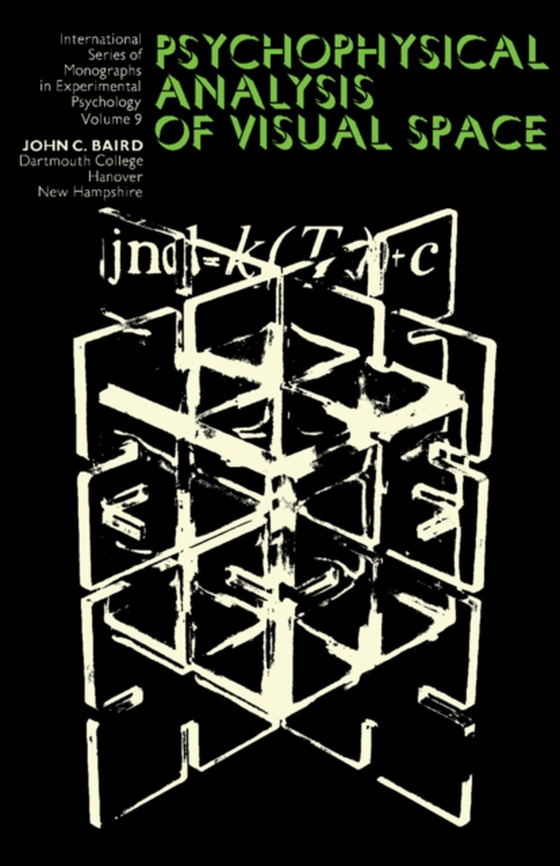
Psychophysical Analysis of Visual Space e-bog
473,39 DKK
(inkl. moms 591,74 DKK)
Psychophysical Analysis of Visual Space focuses on the use of psychophysics in the analysis of visual space, with emphasis on space perception and physiological optics. Topics covered include null-size judgment, ratio-size judgment, frontal-size judgment, and distance judgment, as well as selected physiological correlates of size and distance judgments. A theoretical analysis of model reduction...
E-bog
473,39 DKK
Forlag
Pergamon
Udgivet
22 oktober 2013
Længde
330 sider
Genrer
Cognition and cognitive psychology
Sprog
English
Format
pdf
Beskyttelse
LCP
ISBN
9781483157337
Psychophysical Analysis of Visual Space focuses on the use of psychophysics in the analysis of visual space, with emphasis on space perception and physiological optics. Topics covered include null-size judgment, ratio-size judgment, frontal-size judgment, and distance judgment, as well as selected physiological correlates of size and distance judgments. A theoretical analysis of model reduction is also presented. This volume consists of 11 chapters and opens with an overview of basic definitions and evidence in support of the constancy hypothesis. A psychophysical approach to the problems of visual space is described. The reader is then introduced to null-size judgment, ratio-size judgment, frontal-size judgment, and distance judgment, with emphasis on the importance of the retina as a reference for spatial judgments and how size judgments of targets at different distances can be related to judgments of targets at a constant distance. Some of the important relationships between ocular physiology and size-distance judgments are also examined, paying particular attention to size and distance judgments which relate to the variables of convergence, accommodation, angle-of-regard, and binocular disparity. The remaining chapters look at two stimulus correlates of distance judgments: frontal size and longitudinal size. This book will be of interest to physiologists, physicists, and experimental psychologists.
 Dansk
Dansk

